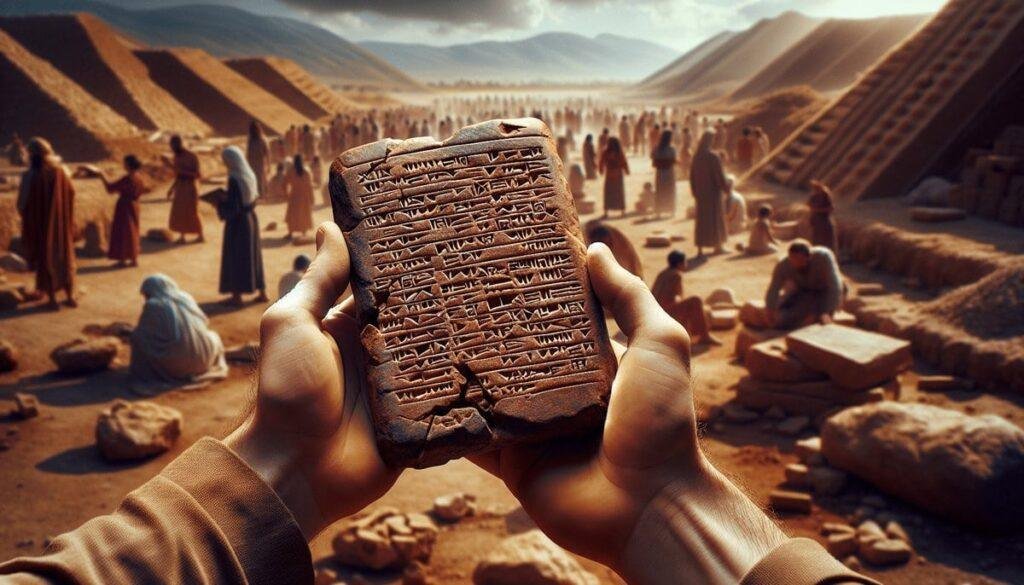Have you ever wondered how technological advancements might reshape our understanding of ancient history? Digital mapping is doing just that by uncovering lost city streets that hold significance in biblical narratives. In recent times, advanced technology has opened new doors into the ancient past, allowing modern civilization to touch the stories once confined to sacred texts. This article delves into the extraordinary revelations brought to light by digital mapping, turning the pages of history to rediscover streets long considered lost.
Discovery Context
The discovery of these lost city streets is rooted deeply in biblical references. The city in question is believed to have been pivotal during the biblical era, carrying with it tales of ancient life etched into its very foundations. Scriptural connections, found primarily in the Old and New Testaments, have served as the initial guideposts, directing researchers to geographical regions that might harbor these hidden pathways.
Biblical Reference
Various biblical texts have hinted at the existence of such thoroughfares in a city renowned for its prosperity and historical importance. For centuries, these streets have remained elusive—mentioned in sacred text and whispered about in theological circles but never physically seen. The use of biblical references in directing modern archaeological exploration helps elucidate the potential accuracy of these ancient texts, bridging the realms of faith and academia.
Historical Background
The city mentioned in the biblical stories flourished in antiquity, likely serving as a hub for trade, culture, and political power. Despite continuous human occupation over thousands of years, specific historic pathways faded into obscurity due to environmental changes, urban development, and historical events like wars and conquests. Locating these streets has required meticulous research and innovative technology, blending historical insights with contemporary scientific methods.
Geographic Location
Recent findings have concentrated efforts on a region known for its rich tapestry of history and biblical lore. You might picture an ancient landscape marked by rolling hills, rivers, and forgotten ruins, predominantly situated in what is now part of the Middle Eastern terrain. Digital mapping tools have zeroed in on specific coordinates, nudging archaeologists toward redefining established geographic assumptions.
Recent Findings
The breakthrough in mapping unfolded through a collaborative effort leveraging ground-penetrating radar and aerial drones equipped with LIDAR technology. These tools rendered highly detailed topographic maps where faint outlines of ancient streets emerged from beneath modern vistas. The unveiling of these networks transforms preconceived notions of urban layouts during biblical times, offering unprecedented depth and expansion to archaeological records.
Archaeological Evidence
News of such discoveries often stirs excitement, primarily when artifacts accompany the revelations. Archaeological findings become the backbone of reconstructing ancient life in both scholarly and public imagination.
Specific Artifacts
Uncovered relics range from everyday items to remnants of once-illustrious buildings. Pottery shards, tools, and rudimentary artworks bring insights into the daily lives of the city’s bygone inhabitants. These artifacts allow historians to piece together narratives of social structures, economy, and cultural practices, all swirling around the bustling streets of the lost city.
Dating Methods
To accurately place these streets within a historical timeline, various dating methods have been deployed. Carbon dating and stratigraphic analyses cross-reference artifact ages, and when calibrated with historical documents, they provide a firm chronological framework. This precise dating not only anchors these streets within a specific era but also aligns them with biblical events, enhancing the authenticity of such narratives.
Physical Descriptions
The recovered street outlines suggest a system that mirrored the comprehensive urban planning of distinguished ancient cities. Wide main thoroughfares flanked by narrower lanes, suggest zones designated for commerce and domestic life. Such descriptions provide clear images of what city life may have thrived upon, indicating a complex society with precise planning.
Expert Interpretations
Leading historians and archaeologists interpret these findings as significant corroborations of biblical city descriptions. Their perspectives cultivate discussions around the enrichment of historical accuracy and the uncovering of past complexities. Quotes from experts often emphasize the marriage of technology with historical research, underscoring how these pioneering efforts pave new scholarly directions.
Significance
The implications of unearthing these lost biblical city streets extend far beyond mere historical curiosity. These findings elucidate the profound connectivity between ancient lands and modern understanding.
Biblical Implications
From a biblical scholar’s viewpoint, these discoveries breathe life into scripture. The physical evidence lends credence to narratives once confined to oral and later literary traditions. By manifesting ancient words into tangible reality, an enriched comprehension of scriptural stories develops, potentially reshaping theological dialogue and study.
Historical Impact
Historically, these discoveries challenge preconceived notions and timelines that have been debated for generations. For those within academic circles, it provides a more nuanced understanding of religious, social, and political conditions that prevailed during those times. The reconstructed stories afford historians a more textured understanding of ancient civilization dynamics.
Modern Understanding
For the modern observer, such insights enhance the collective understanding of how ancient societies operated within their environments. It emphasizes continuing relevance where technological advancements bridge the gap between past knowledge and current learning. Digital mapping thus becomes a tool not only of discovery but of educational reform, redefining how ancient history is taught and perceived.
Research Status
Ongoing research continues to monitor and analyze these findings, generating an evolving landscape of archaeological scholarship. The unveiling of such sites aids in formulating new hypotheses while nurturing traditional discourses with contemporary methodologies, ensuring that ancient discoveries resonate within modern scholarly communities.
Conclusion
In sum, the utilization of digital mapping in unearthing these lost biblical city streets represents a convergence of past text with present technology, offering enlightening perspectives on society’s foundations. These findings invite continued exploration into the relationship between scripture and history, technological innovation and archaeological practice. As technology shapes the landscape of historical discovery, you are encouraged to engage with this growing dialogue—one that may continually evolve our understanding of humanity’s ancient past.





